Being lactose intolerant is not a life sentence without cheese. I know this from my own experience. For all cheese lovers who are trying to avoid lactose, I have compiled a list of my top 10 lactose free cheeses.
SEE ALSO: Our complete guide to lactose free cheeses →
A lactose intolerant cheese lover
For those of you who don’t know me, my name is Sabine and I’m one of the co-founders of The Cheese Wanker. In my mid 20’s, I discovered that I was lactose intolerant. Hence began my relentless search for cheeses that contain little to no lactose. And that search has been very fruitful. On this list, you will find cow’s, goat’s and sheep’s milk cheeses. Let’s have a look.
1 Gruyère
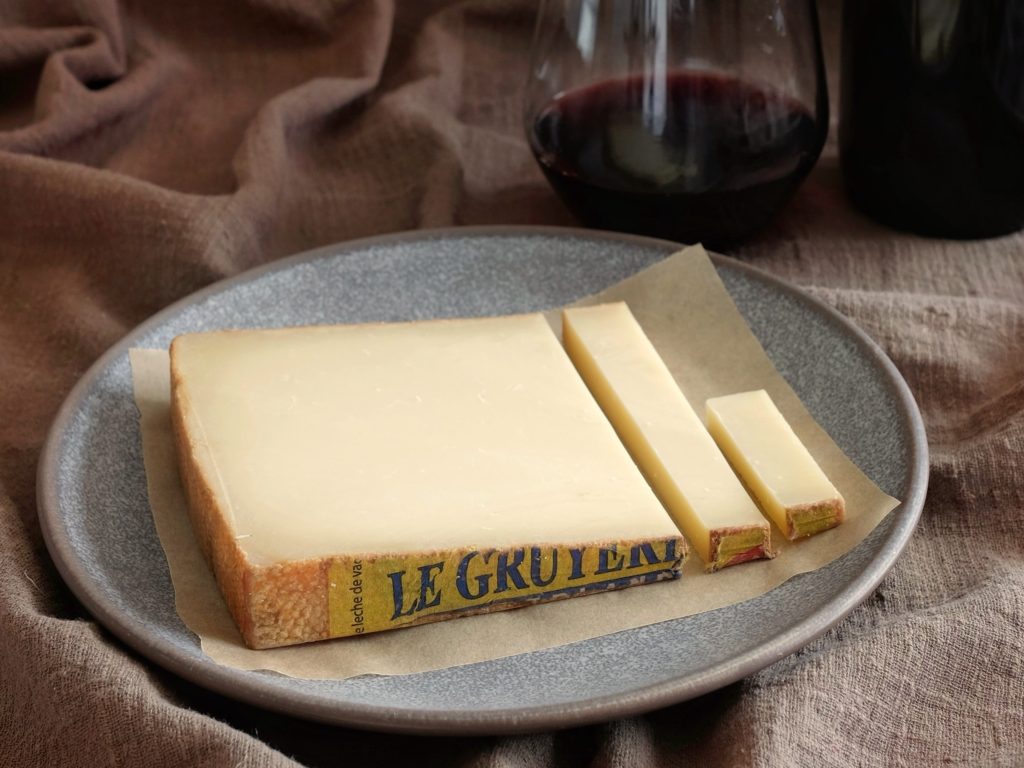
Let’s start my list with one of my all time favourites, Gruyère. Gruyère might just be Switzerland’s most famous cheese. While its origins date back to the early 12th century, it is still made to this day using the same, traditional methods.
Moreover, only a select number of artisanal cheesemakers in a handful of cantons in Switerland are allowed to produce Gruyère. And, they always use the finest local raw, unpasteurised cow’s milk.
Between 6 and 9 months of age, this famous cheese has a soft and refined taste with sweet notes. From 10 months onwards, it is referred to as Réserve and has a full-flavoured and aromatic taste. Some wheels will be matured up to 18, or even 24 months for even more robust flavours.
2. Parmigiano Reggiano
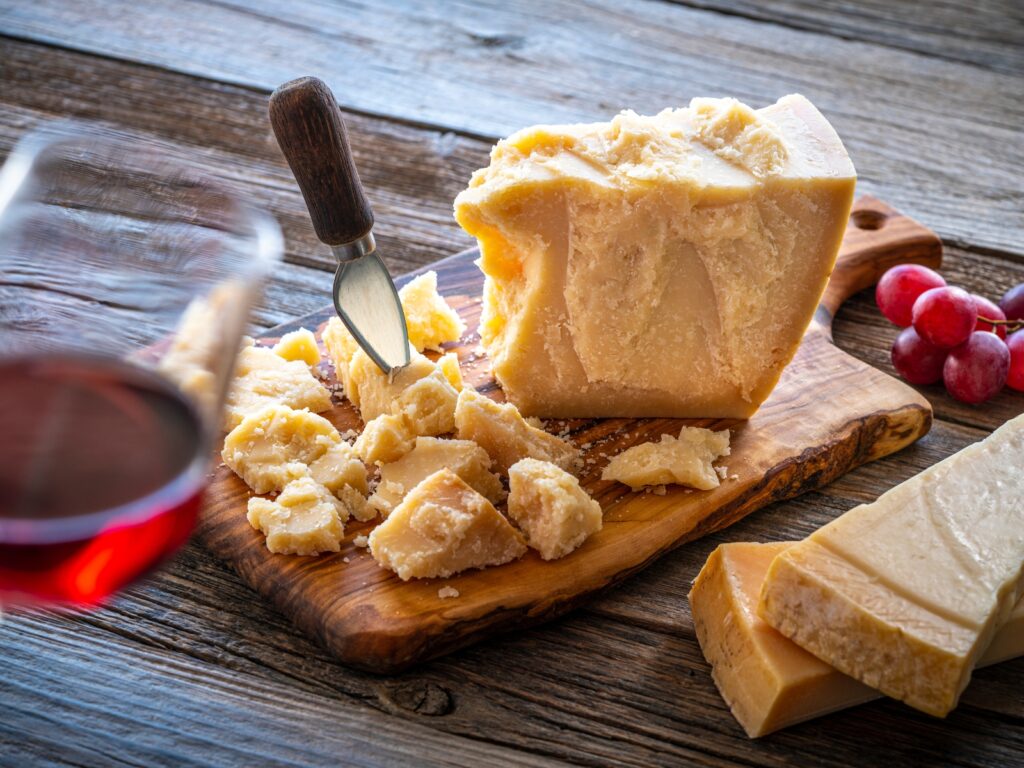
Next, we find Italy’s uncontested King of Cheeses. Parmigiano Reggiano is a traditional raw cow’s milk hard cheese from northern Italy. Effectively, it dates back to the Middle Ages when Benedictine and Cistercian monks were the first producers.
Actually, Parmigiano Reggiano is available at a number of ages. But, even the youngest wheels (at 12 months) have no detectable levels of lactose. Moreover, this legendary cheese excels both as a table cheese and an ingredient in cooking.
Coupled with its fruity and nutty aroma is a delectable flavour palette that includes savoury and umami. In addition to this, it leaves a wonderful savoury aftertaste which lingers for long after you’ve devoured the cheese. Some great dishes to add this cheese due are a rocket and pear salad. And any pasta dish.
3. Aged Cheddar
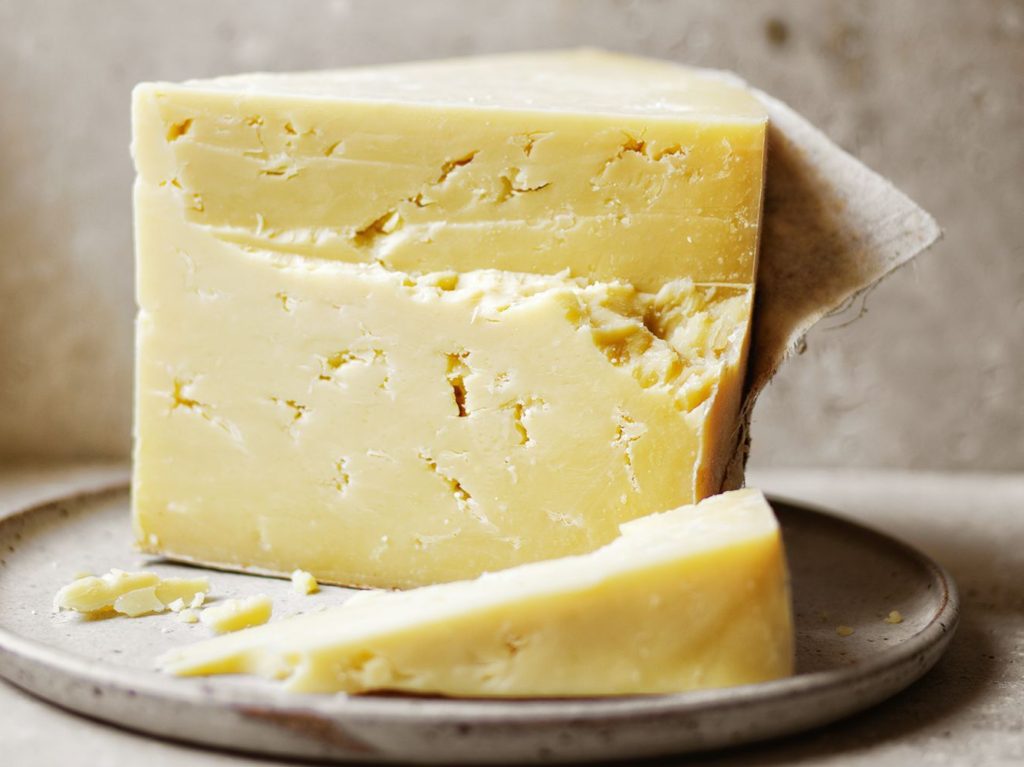
Undoubtedly, Cheddar is the world’s most popular cheese. But, did you know that from around 12 months on, it has no detectable levels of lactose? Indeed, this traditional English cheese from Somerset is one that I keep going back to. And, my pick of the bunch is the West Country Farmhouse Cheddar.
At 12 months, their cave aged wheels have a robust tangy flavour which lingers in the mouth. Furthermore, as the cheese loses moisture, its texture becomes denser and crumblier.
Matured Cheddars are excellent table cheeses due to their complexity of flavour. However, they are also a lot of fun to cook with. Some great recipes you can add Cheddar to include Mac & Cheese, burgers and grilled cheese toasties.
4. Brabander Gouda
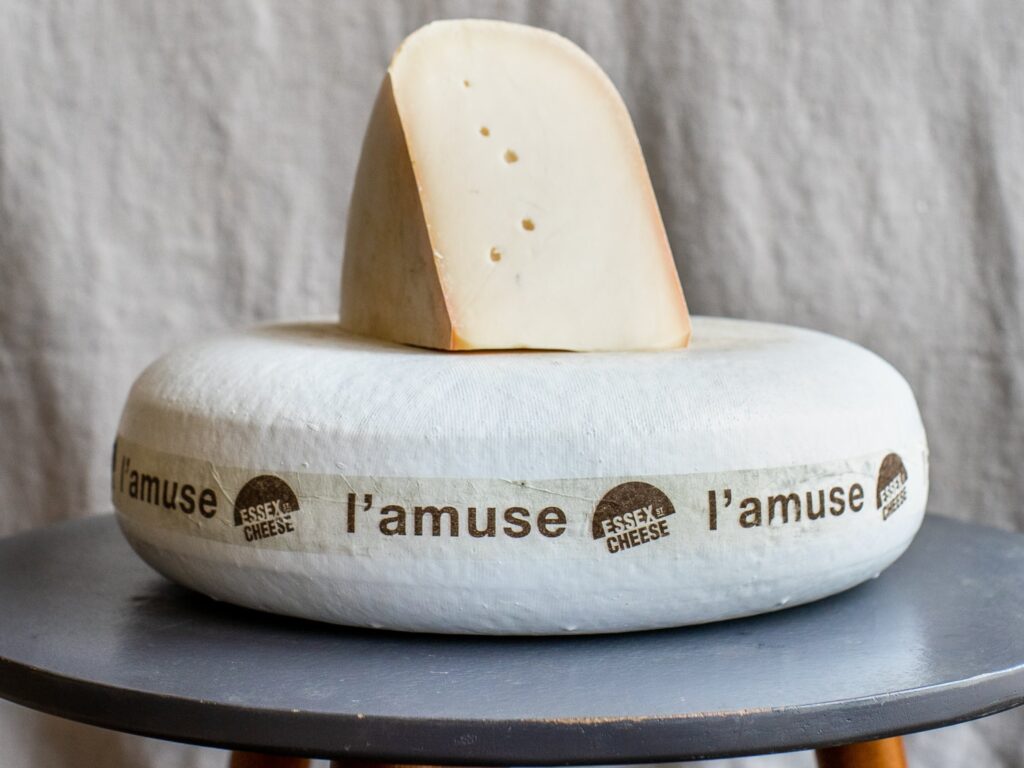
Gouda is the Netherlands’s most famous export. I want to emphasise here that all Goudas are actually lactose free. But this particular number is my personal favourite.
Made in South Holland and matured by L’Amuse, Brabander Gouda hits all the right notes. Indeed, this goat’s milk wonder is an absolute feast for all of your senses. Its pristine white, crumbly texture is reminiscent of a block of white chocolate.
As for its flavour, it is delectably sweet with a nutty and fruity finish. This goat’s milk Gouda is an excellent addition to your next cheese plate. Actually, I’d even recommend it as a centrepiece cheese. That’s right, it does not need anything else served with it.
5. Pecorino Romano
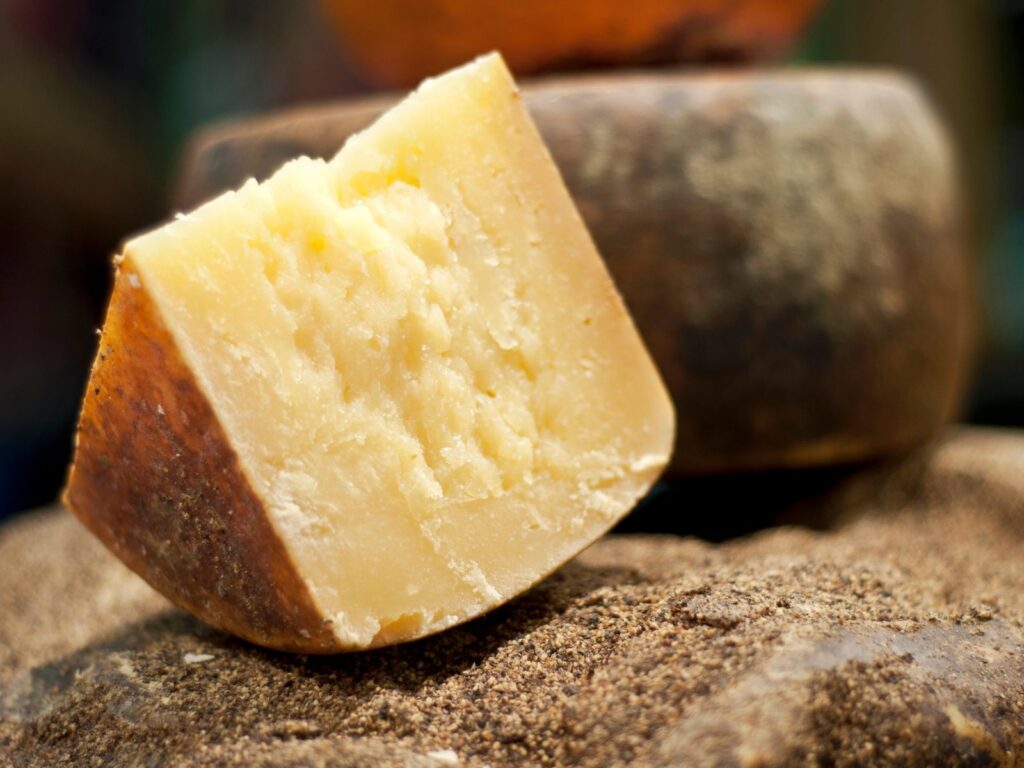
At number 5, we have the first sheep’s milk cheese on my list. Pecorino Romano is a hard cooked cheese that originates from the Lazio region of central Italy.
Actually, this grana-style cheese is one of Italy’s oldest cheeses with records of its existence dating back to the 2nd century. Indeed, the Roman legions used it as a staple in their diet alongside bread and farro soup.
You will want to choose a mature Pecorino (over 8 months) to be sure to avoid any lactose. At that age, the cheese is also more crumbly with a piquant, smoky and intensely savoury flavour.
Pecorino Romano is an excellent table cheese, particularly when combined with fresh vegetables and fruit. At eight months, Italians enjoy it grated on classic Italian dishes such as Bucatini all’Amatriciana, Spaghetti Cacio e Pepe and Tripe alla Romana.
6. Comté
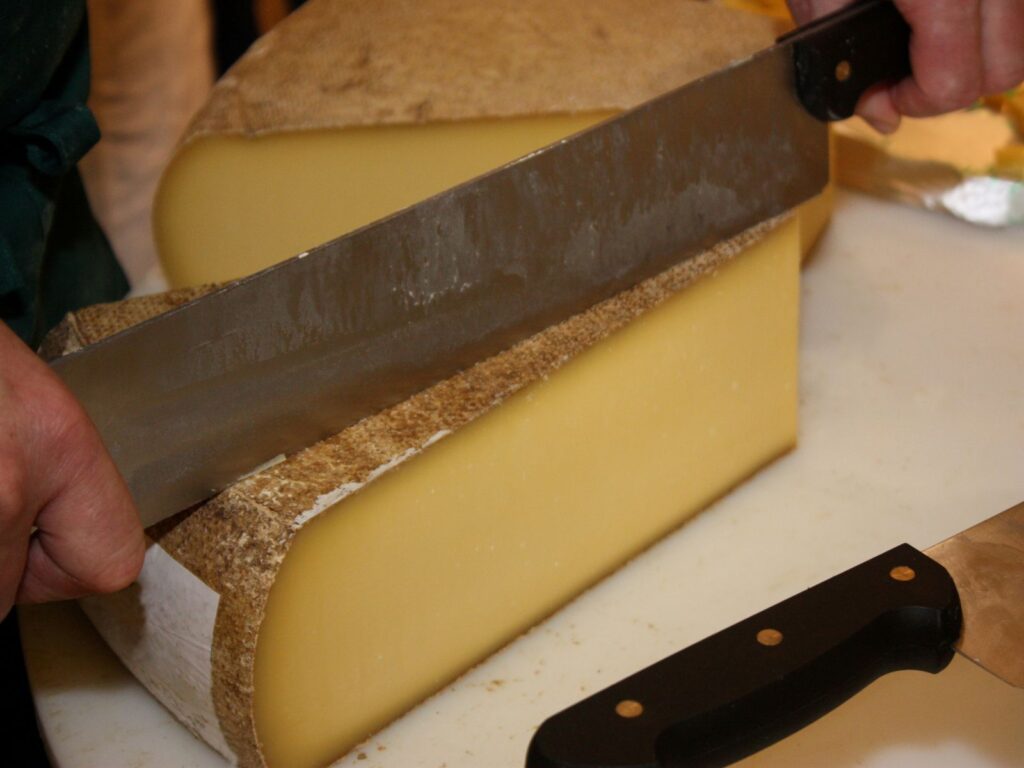
There are few pleasures in life that can compare to a 12 month old Comté. This traditional pressed cheese comes from the Jura region of France and is always made with raw cow’s milk. Did you know that Comté is one of France’s most popular cheeses?
Similarly to Gruyère, Comté is available at different ages. To make sure that it has no lactose, choose a Comté that is over 12 months old. At that age, you can expect a slightly firm texture and fruity aromas.
As for the flavour, it is incredibly complex and varied. You can expect everything from sweet to savoury, nutty to fruity and brothy to herbaceous. Comté excels as a table cheese but is also a great melter. Some classic recipes that you can use Comté in include Fondue Savoyarde and grilled cheese toasties.
7. Manchego
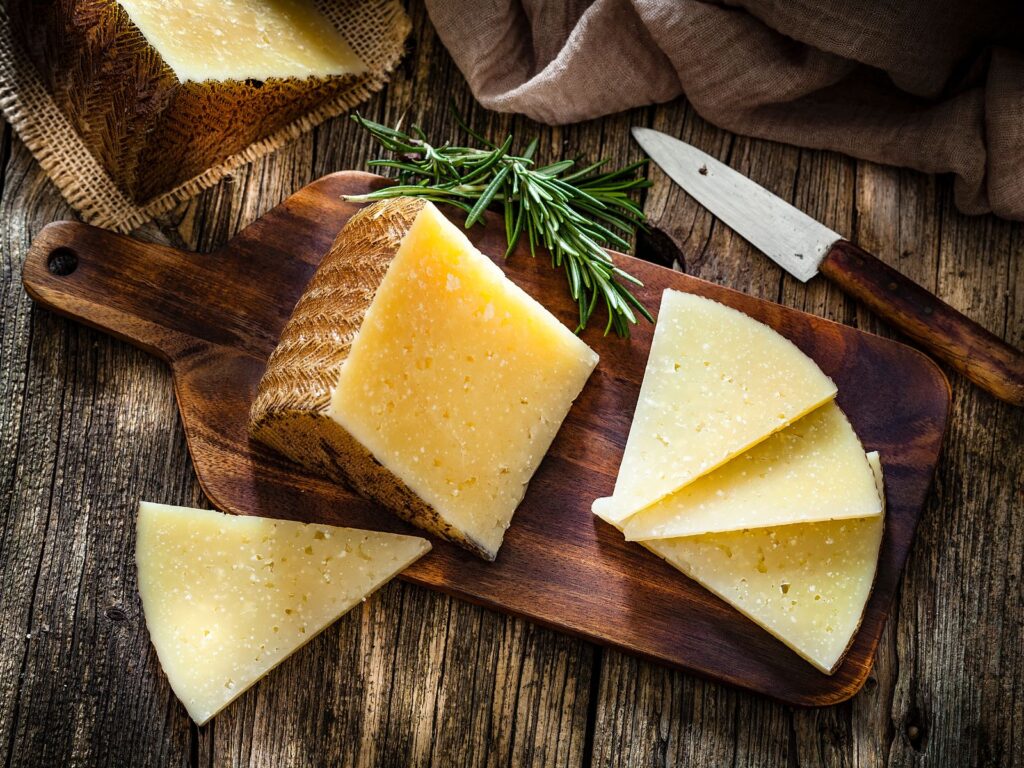
Manchego is Spain’s most popular cheese. Actually, it accounts for one third of the country’s entire cheese production. Originating from La Mancha in central Spain, this hard cheese is traditionally made using the rich, fatty raw milk of Manchega sheep.
In a similar way to French Comté and Swiss Gruyère, Manchego demonstrates an incredible range of flavours. Be prepared for symphonic strokes of fruits and nuts, along with zesty undertones of piquancy. Furthermore, the dried esparto grass imparts aromas of dried herbs to the cheese.
Unsurprisingly, Manchego’s intense flavour and crumbly texture make it an ideal table cheese. Round up your cheese board with olives, sun-dried tomatoes, crusty bread. And wash it all down with a robust red wine or dry Sherry.
8. Tomme de Chèvre
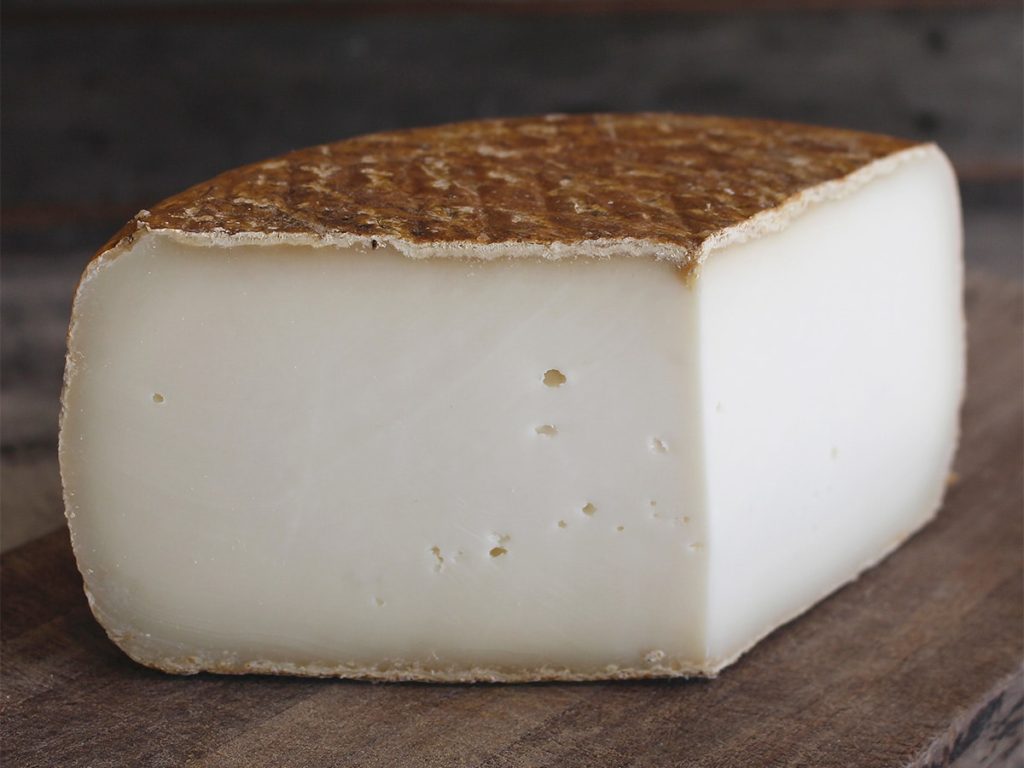
At number 8, we’ve got the second goat’s milk cheese in my top 10 lactose free cheese. Tomme de Chèvre is an artisanal goat’s milk cheese that comes from the Savoie and Haute-Savoie regions of eastern France.
Finding its roots in the 17th century, this semi-hard cheese is a moist, white uncooked pressed cheese with a grey/brown natural rind. Since those days, local farmers have made Tomme de Chèvre using full-fat raw goat’s milk. As a result, this cheese has a strong goaty aroma and its flavour is reminiscent of fruits and hazelnuts.
While it is a great table cheese, Tomme de Chèvre is commonly enjoyed melted on potatoes or even simply bread. Actually, the locals also melt and scrape it like a Raclette. White wines from Savoie, Apremont, Abymes or Roussettes perfectly complement this mountain cheese.
9. Ossau-Iraty
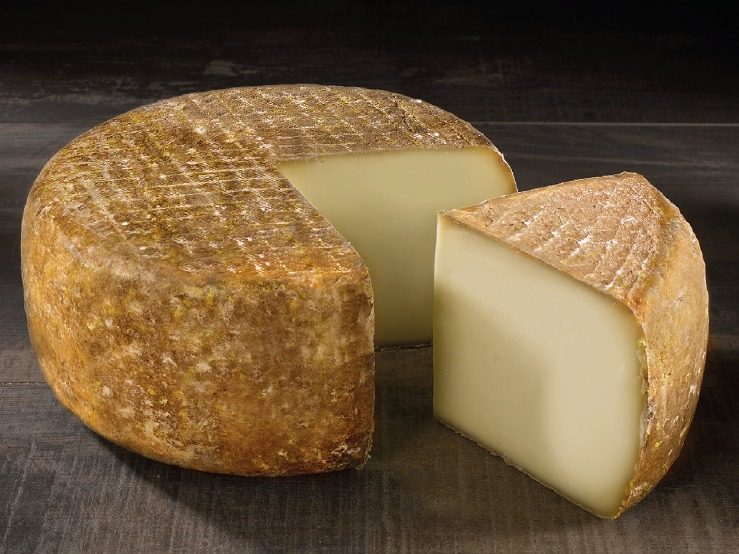
Ossau-Iraty is a traditional sheep’s milk cheese from France’s Pays Basque and Béarn regions. This semi-hard beauty from the Pyrenees has a hay-coloured patchy rind and a pristine ivory pâte. Its aroma is surprisingly buttery and sweet with a touch of barnyard.
On the palate, you will detect notes of toasted wheat, roasted nuts, fresh grass and wildflowers. As the cheese ages, its creamy texture starts to become firm and calcium crystals start to appear. The flavour also tends to be more savoury.
The traditional Basque way to serve sheep’s milk cheese is to thinly slice the cheese. It is then served with a local Itxassou cherry paste and crunchy bread. It will also pair beautifully with a juicy Bordeaux, a robust Rhône or a tawny Port.
10. Mimolette
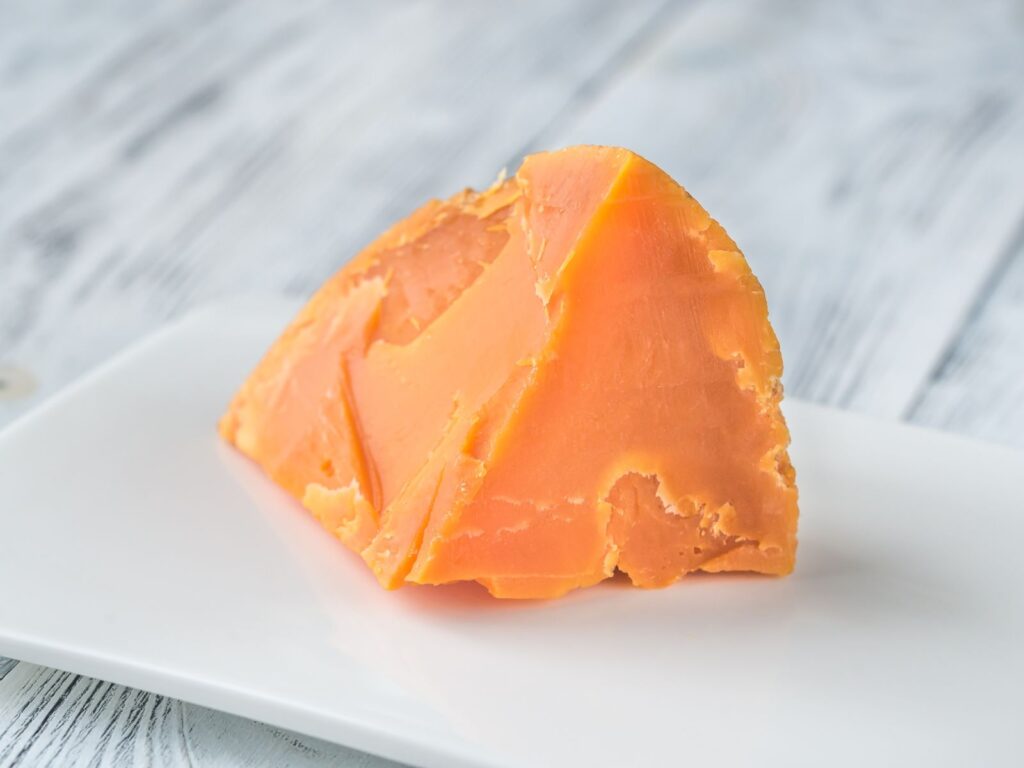
The final lactose free cheese on my list might just be the most spectacular one of them all! Mimolette is a brightly coloured hard cheese made by the Losfeld family in Lille, northern France. It draws its inspiration from the traditional Dutch recipe for Edam.
However, it differs from its Dutch counterparts in the use of annatto to impart its trademark bright orange colour. A mature Mimolette has a distinctive greyish rind, which resembles the skin of a cantaloupe.
Actually, it is the work of the world’s smallest affineurs, the cheese mites (Acarus siro). Mimolette makers intentionally introduce these tiny arachnids during the maturation process.
Overall, Mimolette has a fruity aroma coupled with an incredibly complex flavour. As a matter of fact, your palate will detect notes that oscillate between savoury and sweet caramel. Its texture is hard and crumbly but yet it still melts in your mouth. Finally, it has a lingering aftertaste that is quite nutty.
What are your top lactose free cheeses?
We hope that you enjoyed reading about my top 10 lactose free cheeses. Without a doubt, there are a large number of cheeses that are suitable for people who can’t digest lactose, like me.
The 10 on my list are my favourites, but there are many more cheeses that I can eat without having to worry about the consequences. Some others worthy of a mention are Raclette, Provolone, Buffalo Mozzarella and Emmentaler.
Did your favourite cheese make it onto my list? Drop me a comment below. I’d love to hear from you.

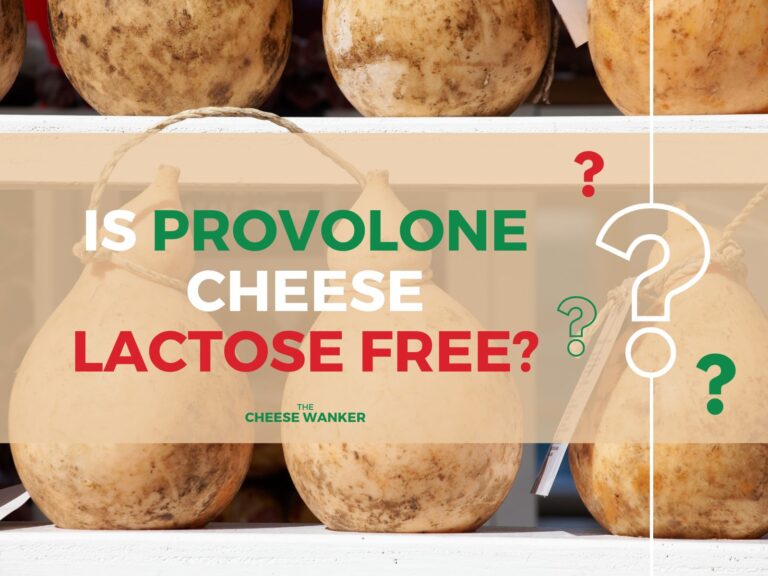


Thank you for being here in the InterwebnetbookX of information. I have finally admitted to myself that I am quite lactose intolerant and on a whim I searched for lactose free or very low cheese. My pallet is saved now!!! Bring on the Brie and Camembert and when I finish with that, let me have my blue cheese!
From there I will just jump in and get back what I thought I’d lost.
Thank you!!
Hi John, thank you for reading our post and leaving a comment. Indeed, being lactose intolerant does not mean that you have to live a cheese-free life. I would still recommend a little bit of caution with the softer cheeses though. Maybe test out small portions first to see how your gut reacts to them. Keep me posted on your progress. Cheers, Sabine.